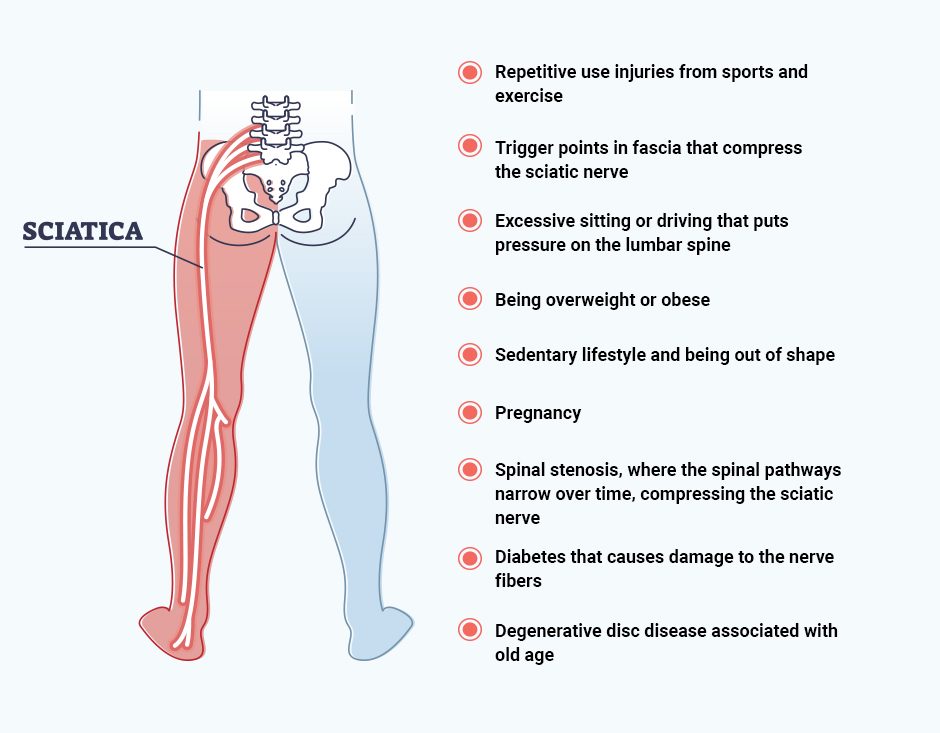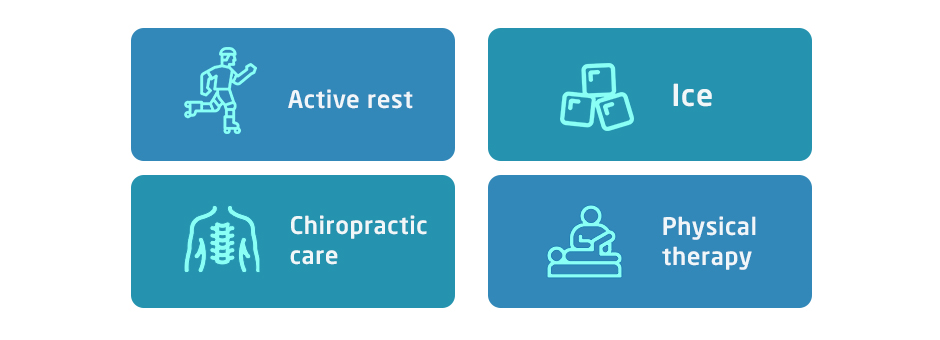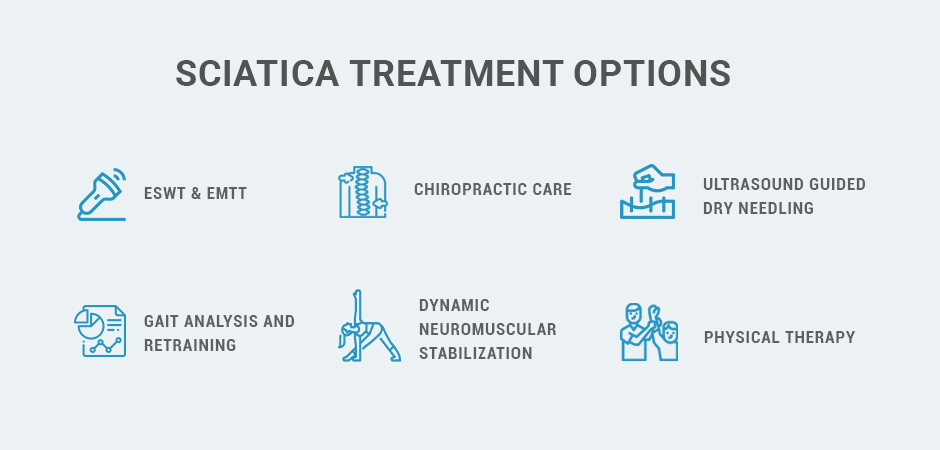Sciatic nerve pain is a fairly common complaint among adults, and it can be a real nuisance. But few people understand the underlying causes of sciatica, and even fewer realize how much they can personally control the onset and duration of the condition. Patient education is key to preventing sciatic nerve pain and recovering from it as quickly as possible.
Your sciatic nerve is the longest and widest nerve in your entire body, It’s nerve roots emerge from the lumbar spine and descend from your low back, down your buttocks, and travel along the back of your legs, all the way to your feet and ankles. While sciatica is most often felt near the nerve roots in the lumbar spine, pain can manifest anywhere along the sciatic nerve’s pathway.
In most cases, sciatica is caused by a herniated (bulging) disc in the lumbar spine that puts pressure on the nerve roots. In such cases, pain is often felt in the lower back, usually on one side of the lumbar spine. But sciatica pain can manifest anywhere along the nerve’s path.
Piriformis syndrome is a form of sciatica where the piriformis muscle, a narrow muscle located in the buttocks, compresses, entraps or irritates the sciatic nerve. You may feel pain in your buttocks, or pain may radiate down the back of your leg, along with tingling sensations and numbness.
Sciatica may have a number of underlying causes, such as:
Repetitive use injuries from sports and exercise
Trigger points in fascia that compress the sciatic nerve
Excessive sitting or driving that puts pressure on the lumbar spine
Being overweight or obese
Sedentary lifestyle and being out of shape
Pregnancy
Spinal stenosis, where the spinal pathways narrow over time, compressing the sciatic nerve
Diabetes that causes damage to the nerve fibers
Degenerative disc disease associated with old age
Managing your weight and getting regular exercise can help prevent sciatic nerve pain. Avoid sitting for long hours without taking activity breaks, and avoid sugars and grains that contribute to diabetes.
The good news is that most cases of sciatica self-resolve in one or two weeks. While a doctor may give you pain medications and anti-inflammatories to manage the pain and discomfort of sciatica, there are several drug-free proactive measures you can take to speed up recovery.
1. Active rest
Abstaining from the activities that contributed to your sciatica to begin with is a good place to start. If your sciatic nerve pain stems from sports or exercise, you may need to take some time off from those activities. Try substituting swimming or walking laps in the pool if being inactive is not an option for you.
If your sciatica arises from sitting, being sedentary, or being out of shape, doing more of the same will not help your case. Water activities are a good option to get active again, since the buoyancy of water takes pressure off your joints and nerves while helping to build cardiovascular endurance and muscle strength.
2. Ice
If sciatica is caused by a bulging disc or inflamed soft tissue, ice can help to quickly reduce inflammation and relieve pressure on your sciatic nerve. In many cases, a bag of frozen peas across your low back or on your buttocks can help to eliminate sciatica overnight.
3. Chiropractic care
Chiropractors are nerve and spinal specialists. They use special therapies and techniques that are proven to restore healthy interactions between your nerves and the structures that surround them. Regular chiropractic care can help to prevent recurring episodes of sciatica.
4. Physical therapy
A good physical therapist can work with you to speed up recovery from sciatica. They use a variety of therapies, including nerve flossing exercises that promote smooth gliding of the sciatic nerve, and stretches that release tight muscles like the piriformis.
A highly trained physical therapist or chiropractor may also use some of the following treatment approaches:
Extracorporeal shock wave therapy (ESWT), to relax tight muscles and promote the progenesis of new nerve cells where the sciatic nerve has been damaged.
Electromagnetic transduction therapy (EMTT), to reduce inflammation and numb excited nerve roots.
Ultrasound guided dry needling, to release painful trigger points that may contribute to sciatic nerve pain.
Dynamic neuromuscular stabilization (DNS), to restore innate healthy movement patterns that deteriorate over time, placing pressure on nerves.
NYDNRehab in Manhattan is a unique clinic that provides chiropractic care and physical therapy to athletes, physically active people, and average people with everyday pain syndromes and musculoskeletal dysfunction. Dr. Lev Kalika, the clinical director, has dedicated his career to finding innovative treatment solutions for his patients.
Sciatica treatment at NYDNRehab begins with diagnostic ultrasonography using the highest resolution equipment available. Ultrasound lets you visualize the sciatic nerve along its entire pathway in real time, to detect the exact cause of your sciatica pain. Accurate diagnosis is key to accelerating the recovery process from sciatica.
Once your diagnosis is complete, sciatica treatment options include:
NYDNRehab provides personalized one-on-one treatment protocols based on the individual characteristics of your condition. They never take a one-size-fits-all approach to sciatica treatment. How long it takes for your sciatica to heal depends on how proactive you are in seeking care. You can avoid drugs and surgery, and speed up healing from sciatica with self-care, conservative chiropractic care and physical therapy.
Resource
Ostelo, Raymond WJG. “Physiotherapy management of sciatica.” Journal of physiotherapy 66.2 (2020): 83-88.


























































